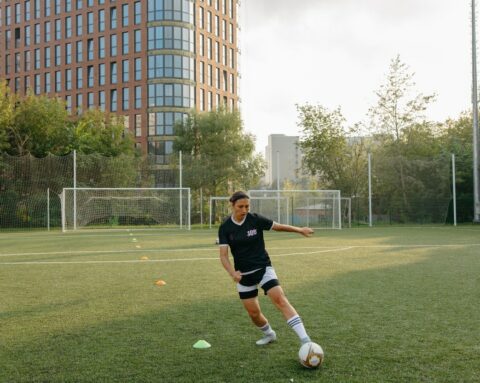Proximal Hamstring Tendinopathy
Proximal hamstring tendinopathy is the name for an injury to the hamstring tendon that attaches to the pelvis. It often appears as a gradual onset of pain that can be felt on the posterior of the thigh, deep in the buttock or as pain that flows down from the thigh to the knee. The pain may increase during repetitive actions such as running and is especially common in people who participate in sports such as soccer and AFL.
Causes:
The hamstring is specifically designed to transfer the force from your hamstring muscle group to the pelvis. As a result of all this force constantly being moved, the hamstring is prone to tendinopathy. This is particularly common in people who regularly run long distances, sprint or do activities that involve running on inclined slopes.
The hamstring tendon is usually extremely capable of intrinsic repair and can heal within approximately 24 hours from a normal load of exercise. If an excessive load is continuously applied, changes can occur in the tendon that vastly exceed the rate that the hamstring is able to recover. This, along with other minor factors, is the cause of proximal hamstring tendinopathy.
Risk Factors:
Proximal hamstring tendinopathy has a number of risk factors that can occur over time. These factors may be intrinsic or extrinsic. The extrinsic risk factors are poor equipment, poor warm-up and recovery methods, errors in training sessions such as technique, sudden changes in training load and fatigue. The intrinsic risk factors are being overweight, have a weak core, having stiffness in the hips, reduced gluteal muscle strength, previous injuries causing a loss of strength and being female. Your myotherapist is the best person to discuss your own personal risk factors and identify the cause of your tendinopathy.
Diagnosis
Your proximal hamstring tendinopathy will be diagnosed clinically using a combination of pain provocation tests and your injury history. MRI and similar diagnostic image testing are only required if your myotherapist or doctor needs to rule our similar conditions. This may occasionally be necessary if your myotherapist needs to ensure that your hamstring injury is not a complete rupture of the tendon. As proximal hamstring tendinopathy is one of the major causes of lower buttock pain, it is extremely important to assure you are given the correct diagnosis to aid your treatment plan and recovery.
Treatment:
Your proximal hamstring tendinopathy will actually be treated partially through exercise! Recently there has been an increase in the success of treatments involving exercise to manage tendinopathy. Certain exercises that do not cause the muscle length or the angle of your joint to change during exercise are proven to be very effective in pain reduction and relief. It is vital to manage your exercise load when treating proximal hamstring tendinopathy. whilst a mild load will stimulate the growth of the tendon, overloading will cause major setbacks. ⠀
Your tendon will be able to recover faster and more efficiently if you discover your hamstring tendon injury as early as possible. Identifying the issue early allows for better load management and reduction which is key in fast recoveries. It is not uncommon for pain to lower within 5 to 10 days however it is important to note that increasing load too much is a huge risk factor in the early recovery period. Gradually increasing the load will prevent a reoccurrence. If your proximal hamstring tendinopathy does not heal as expected or falls into a later stage of injury it may require extra rehabilitation and much more time.
Some great options for treating proximal hamstring tendinopathy include foam rolling and eccentric strengthening. Eccentric strengthening refers to using isometrics that avoids aggravating the hamstring. This may involve targeting exercises that do not compress the tendon. There are also certain positions that when using a foam roller will not cause you to hyperflex your hip by keeping your knee straight. Massaging your quadriceps, gluteals and hamstrings can assist with your tendinopathy!
Therefore it is extremely important to discuss your activity load with your myotherapist and develop a plan tailored to your needs. This may, in some circumstances mean no exercise at all!






